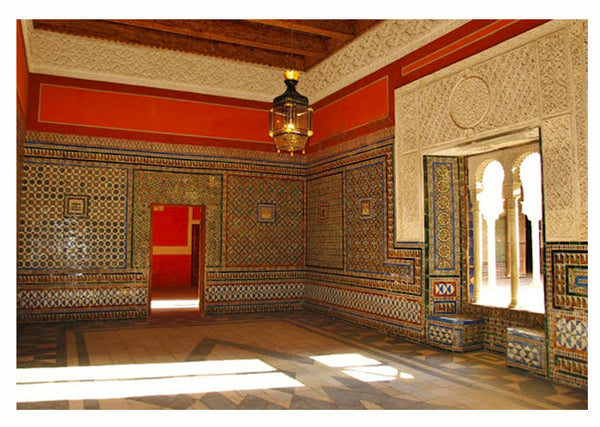
| The Casa de Pilatos has around 150 different tile designs from 1530. One of the largest collections in the world. |


| Legend has it that Trajan's ashes were taken to Seville and preserved in the House of Pilate inside a very valuable funerary urn. |

During the intense summer months, the architectural design has made it habitable. The interior courtyards, fountains, and gardens help keep the palace cool. |


The House of Pilate (Pilate's House) is an Andalusian palace in Seville, Spain, serving as the permanent residence of the Dukes of Medinaceli. It is an example of an Italian Renaissance building with Mudéjar elements and decorations. It is considered the prototype of an Andalusian palace.
The Casa de Pilatos has around 150 different tile designs from 1530 made by brothers Diego and Juan Pulido, one of the largest tile collections in the world.
The building is dilapidated, with swirling tile walls, elaborate vaulted ceilings inlaid with wood, and overgrown gardens that are perfect for a nap or a glimpse of the palace's current residents, the Dukes of Medinaceli.
The palace features unique architecture, supposedly based on the property of Pontius Pilatus, and decoration, including a bust of Caligula. Construction was completed by Fadrique Enríquez de Rivera (the first Marquis of Tarifa), whose pilgrimage to Jerusalem in 1519 led to the building being named "Pilate's House."
Legend has it that Trajan's ashes were taken to Seville and preserved in the Casa de Pilato inside a very valuable funerary urn. It seems that a maid tried to steal the urn and, thinking its contents were just dust, threw it out the window. Since then, it is said that Trajan lives on in every orange tree in the Casa de Pilato garden.
Image source: Getty Images, La Portegna, Bold Bliss Blog, Google Images ©, Medinaceli Foundation






